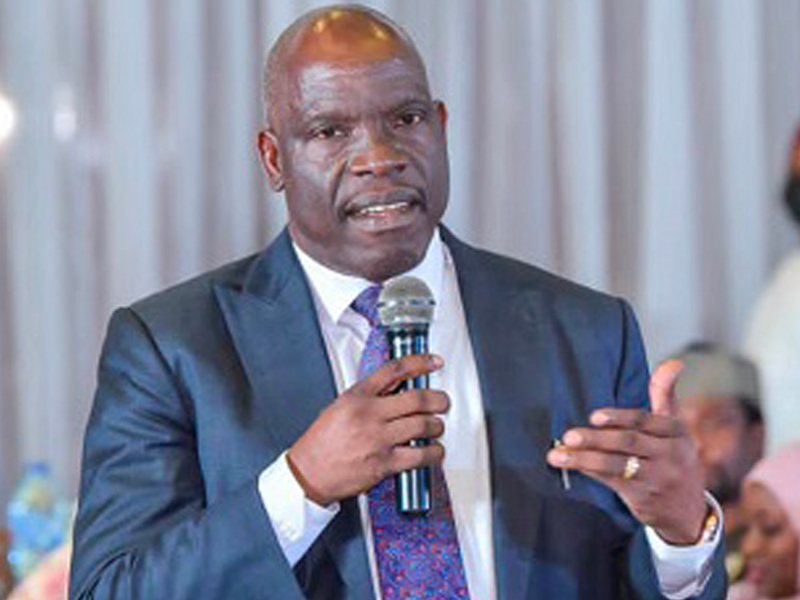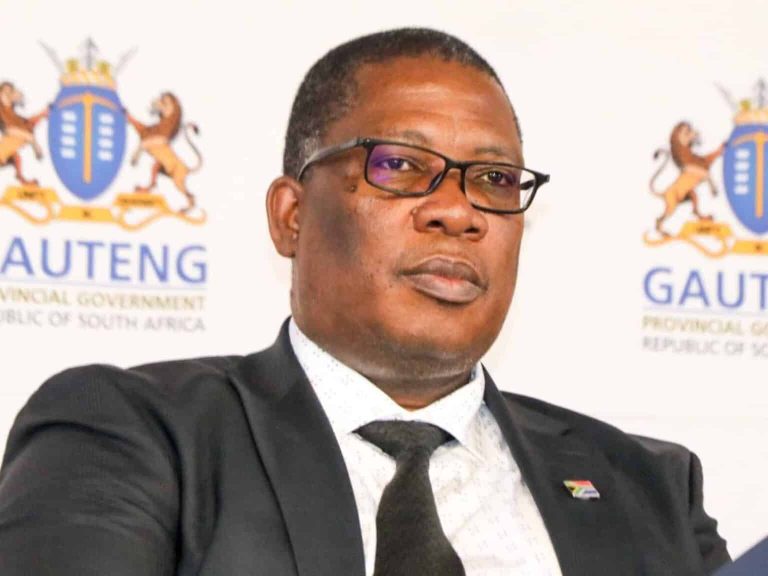
The Nigerian Upstream Petroleum Regulatory Commission (NUPRC) on Thursday stated that achieving a 2.5 million barrels per day crude oil production in 2026 was achievable, especially with the planned reactivation of shut-in and dormant oil wells.
Speaking in Abuja at the 2025 Energy Correspondents Association of Nigeria (ECAN) Conference, tagged: “Four Years of the PIA: Achievements, Gaps and the Road Ahead”, the Chief Executive of the commission, Gbenga Komolafe, noted that the NUPRC was also aiming to slash methane emissions by 60 per cent by 2031.
Besides, Komolafe noted that the approval of 37 new evacuation routes, coupled with intensified collaboration with national security agencies, has significantly curtailed crude theft and enhanced accountability across the industry.
“Through our ‘Project One Million Barrels’ Initiative, launched in 2024, Nigeria is actively ramping up crude oil production by reactivating dormant fields, fast-tracking regulatory approvals, and enhancing operational efficiencies across the upstream value chain.
“With a clear target of increasing production to 2.5 million bpd by 2026, the initiative has already demonstrated strong momentum with current unreconciled daily production averaging 1.7 – 1.83 million bpd.
“Equally crucial is the protection and optimisation of national hydrocarbon assets. The approval of 37 new evacuation routes, coupled with intensified collaboration with national security agencies, has significantly curtailed crude theft and enhanced accountability across the industry. At the same time, the enforcement of the Domestic Crude Supply Obligation (DCSO) is securing consistent feedstock to local refineries, strengthening Nigeria’s internal supply chains and building long-term economic resilience,” he stated.
Represented by the Head of Regulatory and Statutory Compliance, NUPRC, Kingston Chikwendu, Komolafe in his keynote address, stressed that Nigeria faces a dual challenge of managing the risks inherent in a dynamic global energy market while seizing the vast opportunities these resources offer for sustainable growth and energy security.
This is particularly significant for Nigeria, which he averred holds approximately 30 per cent and 34 per cent of Africa’s oil and gas reserves, respectively.
Komolafe highlighted the recent bid rounds which he explained were anchored on quality data access, regulatory certainty, and an investor-centred reform agenda recorded unprecedented successes. These, according to him, included the 57 PPL awards of 2022, the 2022 Mini-Bid Round, and the 2024 Licensing Round.
While hydrocarbons continue to generate nearly 90 per cent of Nigeria’s foreign exchange earnings and 70 per cent of government revenue, he pointed out that Nigeria was fully aware that the long-term viability of the energy sector depends on aligning growth with climate responsibility.
“Our gas-centric energy transition strategy is a cornerstone of this effort, anchored by flagship initiatives such as the Decade of Gas, the Nigerian Gas Flare Commercialisation Programme (NGFCP), and the Presidential CNG Initiative. These programmes collectively aim to eliminate routine gas flaring by 2030 and reduce methane emissions by 60 per cent by 2031,” he added.
Beyond infrastructure, the NUPRC, he said, is also championing the creation of a transparent, competitive, and investor-friendly gas market, unlocking the commercial potential of an estimated 600+ trillion cubic feet of gas resources (upward potential) and positioning Nigeria as a central hub in the global energy transition.
He underscored the new frontier opportunities in onshore, shallow water and deep offshore blocks, especially in underexplored basins, enabled by the new licensing rounds regime.
Also, in a speech made available to journalists at the event, the NMDPRA Chief Executive, Farouk Ahmed, stated that over the past four years, the Authority has implemented a series of reforms and initiatives aimed at strengthening industry compliance, improving service delivery, and fostering stakeholder collaboration.
These efforts, he stressed, have led to improved monitoring mechanisms, data-driven decision-making, and the adoption of innovative technologies to support regulatory effectiveness.
Ahmed, who was represented by the NMDPRA spokesman, George Ene-Ita, said that the Authority has successfully gazetted 18 regulations and developed guidelines and standard operating procedures for implementation in the sector.
Besides, he stated that the organisation has embarked on aggressive automation of processes to enhance service delivery and promote the ease of doing business, explaining that crude supply to domestic refineries rose from about 20,000 bpd in 2023 to above 40,000 bpd in 2025.
“Refined product supplies from local refineries to the domestic market have experienced drastic improvement. For example, PMS supply grew from 1.3 billion litres in 2024 to 3.8 billion litres in 2025, and the outlook is positive.
“The Midstream and Downstream Gas Infrastructure Fund (MDGIF) has Invested over N287 billion in various gas infrastructure projects with 16 companies across 62 projects as of October 2025.
“The MDGIF catalysed an additional $500 million investment to Gas infrastructure by leveraging on Afreximbank Bank MoU to expand energy access to drive economic development.
“UTM Offshore, NLNG train 7, AKK gas pipeline, OB3 gas pipeline, AIPCC refinery, Indorama fertiliser plant and Greenville’s LNG & LCNG projects, Walthersmith Refinery Train 2, Supertech’s Methanol Project are some of the key midstream and downstream facility development projects that brought significant investments into the sub-sector.
“Also, 10 gas distribution licenses were issued for 10 gas distribution zones covering a pipeline network stretch of 692km, with carrying capacity of 712MMscf/day, connecting a total of 412 customers. Total investment value in this distribution system was estimated at $639.07 million with multiplier effect across energy, agriculture, industry, manufacturing and socio-economic impacts,” he stated.
Besides, Ahmed said that 23 refineries ‘License To Establish’ were issued from 2021 to date which when constructed and commissioned will add over 850,000 bpd refining capacity to the existing 1,125,000 bpd capacity.
In its intervention, the Major Energy Marketers Association of Nigeria (MEMAN), urged the authorities to commit resources to build the technical, legal, and administrative skills needed across the new institutions and among industry partners.
Represented by Mohammed Al-Kazeem, MEMAN called for streamlining of processes and removing avoidable delays and review licensing and permit workflows with the objective of eliminating redundant steps, setting clear timelines and service level agreements, and digitising transactions where feasible.
“Ensure open access to infrastructure, enforce competition rules, guard against anti-competitive vertical integration, and make procurement and licensing processes transparent. A level playing field will lower prices, increase choice, encourage innovation, and protect consumers.
“Set clear, public metrics for success: safer operations, timely project deliveries, free and fair market outcomes, increased local content, and visible socio-economic benefits for host communities. Regular, transparent reporting will build trust and allow course correction,” MEMAN stated.
Also, the Minister of State Petroleum (Gas) Ekperikpe Ekpo, stated that the gathering of media professionals, policymakers, and industry stakeholders was both timely and commendable as it also provides an essential platform to reflect on the progress made since the enactment of the PIA.
“Yet, we must also acknowledge that there are gaps that require collective efforts to address particularly in areas of cultural and community development, energy transition, and sustainable implementation of arts provision,” Ekpo, who was represented by the Director of Gas, Ministry of Petroleum, Ruth Mela-Nunghe, said.
Earlier, the ECAN Chairman, Mr. John Ofikhenua, stated that the PIA has brought structure, transparency, and renewed confidence to the oil and gas industry.
“But our work is far from done. The PIA is not a finished product; it is a living document. As technology evolves, as global energy dynamics shift, and as the world races towards cleaner and smarter energy solutions, we too must evolve,” he advised.
Emmanuel Addeh



